December 12, 2014
What was Photography Like in 1955?
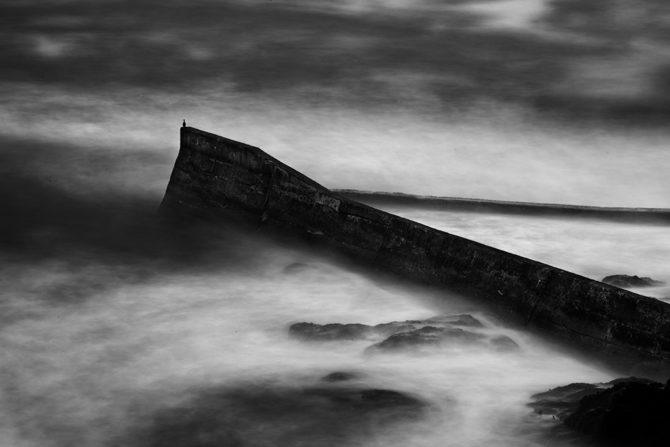 Isolated No. 9
Isolated No. 9I was dropping off an image to be framed at Lloyd’s Art Center here in Fort Collins when I noticed an old 1955 issue of Popular Photography sitting on the counter. The owner Alan Kinney had a stack of them and let me choose one for myself.
As I looked through that magazine, I marvelled at how much photography had changed in thee last 60 years. Let me share a few pages with you:
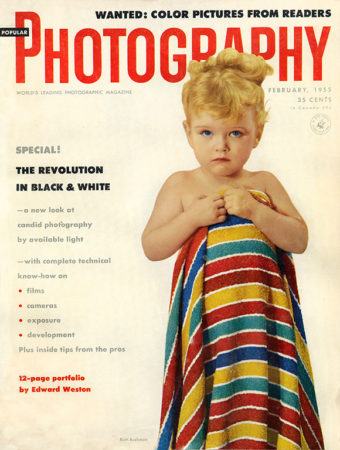
I chose this February 1955 issue because it had a special feature on Black and White and another on Edward Weston.
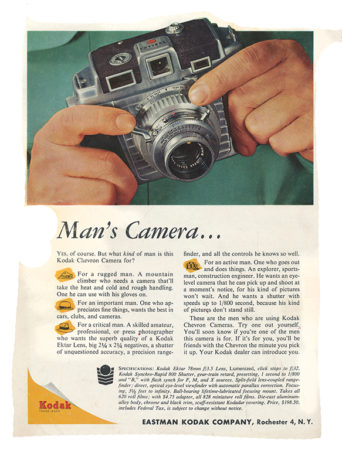
I enjoyed looking at the ads as much as I did reading the articles. Equipment was so cheap by today’s standards, but of course a dollar went MUCH further back then! (I won’t bore you with how much I could buy with a nickle)
What I would give to have a new Exacta VX for $189.50, or an Omega enlarger for $72.95!

I’ve owned many of these East German cameras and their variations: they were basic, cheap and reliable.
These ads remind me how convenient modern cameras are. I remember the days when every shot required a handheld meter reading, manually setting the shutter and aperture and then manually focusing (often on a moving subject) before you took the shot.
No auto focus, no auto exposure, no auto white balance…no auto anything.
Modern equipment is so much better and convenient in every respect, except for perhaps one. The old cameras were durable and built to last several generations. I cannot imagine handing down my digital camera from generation to generation. If I get 5 years out of a modern camera, I count myself lucky.
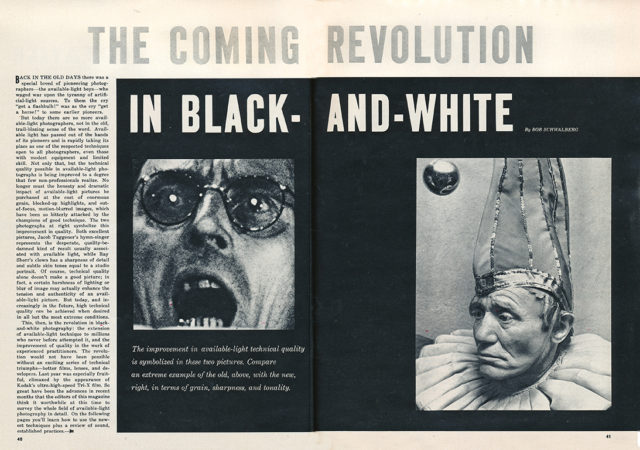
This article is about the coming revolution in black and white due to advances in available light photography. A prominent development was the introduction of Tri-X film in 1954. Tri-X was very fast with an ASA of 400 which we often pushed to 1600 and sometimes even 3200, but the grain was terrible at that speed!
Could 1955 photographers ever believe that one day we could shoot at 25,600?
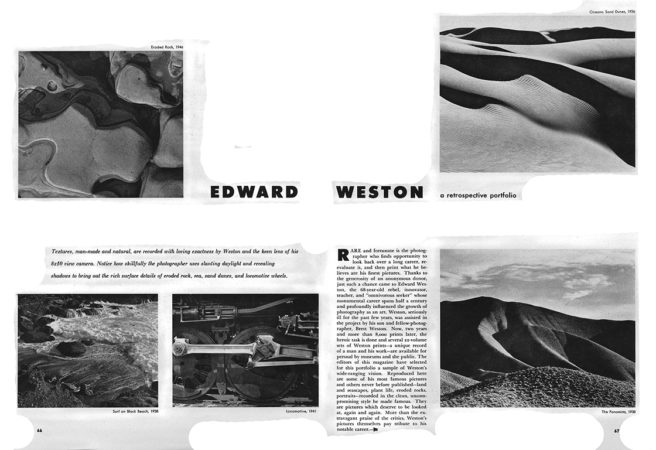
In 1955 Edward Weston was 68 years old, was seriously ill with Parkinson’s disease and would leave this world in less than three years. Popular Photography dedicated 12 pages to his images.
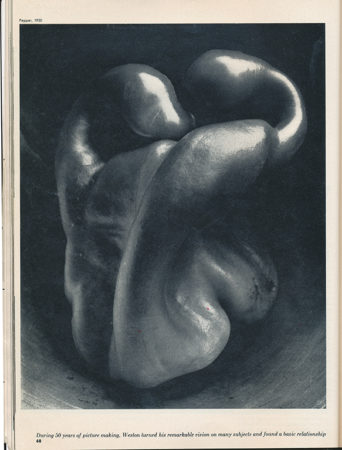
A favorite image of almost everyone is Pepper No. 30, which they oddly identify as Pepper, 1930.
There were a lot of helpful tips and news items in this issue:
Kalart introduced a new flash unit that automatically ejected hot spent flashbulbs.
Coating your Kodachrome glass slide holders with talcum powder will keep them from sticking together.
You can use tungsten film outdoors with the help of a No. 85 filter.
They explained how to adjust contrast when using Kodak Medalist paper by varying exposure and development times.
Instructions were provided on how to convert an ASA film speed index to a Weston speed number.
Tips were given on how to “push film” using D-23, D76 (my developer of choice, diluted 1:1) and Promicrol developers.
I’m sure this is Greek to anyone who is under the age of 50!

Kodak really ruled the world back then with many of the articles clearly written to promote their products. Kodak also had several large ads including this one on the back cover.
I wonder how this ad would sell today? Can you imagine Canon marketing a “Man’s Camera?” (I had never heard of the Chevron camera, does anyone remember it?)
~~~
Looking through this issue of Popular Photography was so much fun! The ads reminded me how much things have changed in the last 60 years and the article on Weston reminded me how much remains the same.
And despite my wonderfully nostalgic feelings for the good old days of 1955 photography, I’d never go back.
Cole

Cole, you don’t have to pay me $179 for an Omega enlarger…. I’ll give you one of mine!
What a great trip down memory lane! Dating myself, I do remember a lot of these things, too!
One particular thing that strikes me is the memory of Tri-X at 400 (and pushed higher). As you note, that was very fast! One thing we lose in digital is the concept of just how magical it is to be able to easily bump the ISO a couple of stops – and still get acceptable images. Not only that, but with digital you can “push” one frame, and not the next. Try that on a roll of Tri-X!
I took my first photograph in June 1953 at a party to celebrate the Coronation of Queen Elizabeth the Second and yes, all this is familiar ground albeit getting a little hazy with advancing years 🙂
I started learning photography about five years ago, on a digital camera, of course. Last year I decided to try my hand at film photography because I love that “grainy” look that you get from black and white film. I have to tell you that my least used camera these days is my digital. I love seeing all this old stuff…just love it. Thanks so much for sharing it.
Thank you for sharing Colo??.
Those days are coming back for some of us. I just picked up 2 rolls of t-max 120 I had processed at a local lab. One of those rolls I shot with a Zeiss Ikon Ercona that was made in 1953. It feels great to hold a film neg. in my hand again 🙂 and manually setting the controls on the camera was quite a trip. Not that I’m gonna get rid of my digital cameras, but to tell the truth it’s GREAT to be shooting film again.
hi Cole,
Yes I was a darkroom junkie back in the day(70’s). Converted our bathroom into a darkroom and processed thousands of prints from film, all blk and wht. I fact I still have tons of negatives I have yet digitized. A great project for the future. Thanks for the memory trip, always fun to look at the past. But I’m with you, we’re here to stay. Cheers, Pete
Ironically, I’ve been shooting more film lately than digital. For whatever reason I enjoy the process more. But film can be a PITA and is expensive. It’s nice to be able to do both.
Also, thanks for sending out the email with the link to this. I did miss it the first time around.
Thanks for the post. And like many others I remember most of this stuff, when I can remember anything at all. But I’m 70. This was a good article with so very good point about how well off we are today. BTY like a few of the above, in a way I too am going back in time. I have started using digital captures to produce alternative process prints. Try it, you may like it.
This was fun, Cole, although I was born 6 years after this issue was released. My first camera experience was with a Polaroid Swinger. I still enjoy having access to film but have to face the fact that I love the chemical-free world of digital.
I often say that this is the Golden Age of Photography. And I believe that much of that has to do with the gear and other developments (excuse the pun!) that allows creative people to go where they couldn’t before.
Having said that, there was certainly some great and inspiring work back then.
And I was a D-76 1:1 guy, too!
Thank you for posting this article. I was referred to your site through Bill Fortney’s blog and have enjoyed reading a number of your recent posts.
I initially got into photography in the mid ’60 s and in 1967 got a Nikormat which has both an internal as well as external light meter. I still have it and with one major repair in the mid 80’s it is still a great camera- by 60s-70s standard.
I recently reviewed som elf the images that were shot in the 70s and was disappointed in a lot of them- on the other hand there are some landscapes that I shot with a 2 1/4×2 1/4 with 25 ASA film that ( in my opinion are great).
I have no desire to go back to the good old days- the flexibility and range of the
current stock of equipment allows so much in the way of creative opportunities,